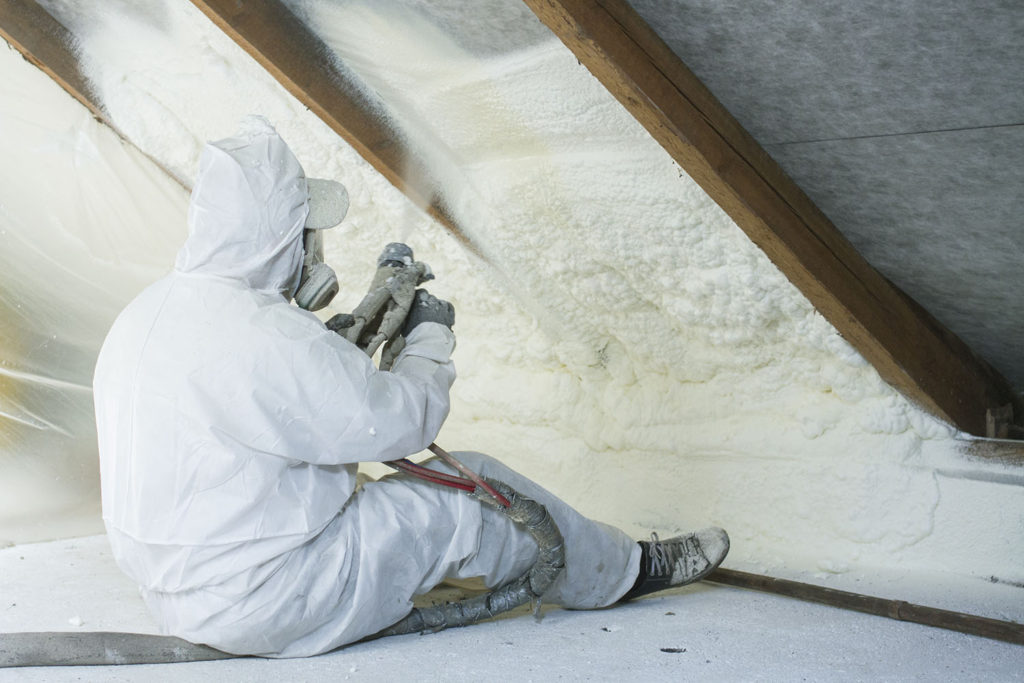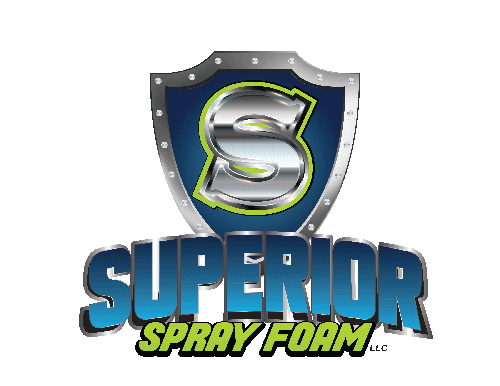
The types of spray foam insulation
Two different types
Spray polyurethane foam (SPF) insulation can be categorized into two different types: light-density open-cell spray foam insulation and medium-density closed-cell spray foam insulation. Both types of SPF are thermoset cellular plastics comprising millions of small cells.
Product innovation over the years has seen the introduction of several different types of spray foam insulation. Primarily in residential and commercial construction, open-cell and closed-cell spray foam is used while high-density 3 lb. spray insulation is used as roofing foam in commercial or industrial construction.
Open-cell spray foam insulation
Open-cell sprayed-in foam insulation, a soft low-density material, it is a 1/2 lb. foam and is typically used for interior applications such as wall cavities, underside of roof decks, attics, basement walls and crawlspaces. The open cell structure is filled with open cells or carbon dioxide and allows for moisture permeability to help contribute to moisture management and bi-directional drying of the wall assembly. Due to its ability to expand during the application process, it fills cracks, crevices and voids and adheres to irregular surfaces or substrates to form an air sealing insulation. While the R value will vary, most open-cell-SPF products have an R-value of around 3.8 per inch. Unlike medium-density closed-cell SPF, open-cell- SPF is not a vapor barrier. When installed at 5.5 inches or more, open-cell- SPF does act as an air barrier. It is often used for interior walls because it provides sound reduction by blocking and absorbing air leakage. It is usually only recommended for indoor applications.
Closed-cell spray insulation
Closed-cell spray insulation, a rigid medium-density material referred to as a 2 lb. foam and can be used in exterior applications such as continuous insulation applications, as well as interior applications. This type of foam insulation has a higher R-value per inch making it also suitable for small areas that require the highest possible R-value to meet building code requirements and has a long term thermal resistance (LTTR) R-values range from 5.1 to 6.8 depending on the manufacturer. When the required minimum thickness of 50 mm is installed, ccSPF is both a vapor barrier and an air barrier. Closed-cell spray foam’s rigidity help reject bulk water making it a recognized flood resistant material from FEMA.
Open-cell vs. closed-cell benefits
The benefits of open-cell spray foam
As mentioned, open-cell foaming insulation is best suited for interior applications, offering an array of advantages of traditional fibrous insulation materials. Benefits of open-cell foam insulation include:
- Allows for bi-directional drying
- Can accommodate long-term creep and seasonal movement
- Can be installed at a significantly lower cost and target the same specified R-value*
- Is not considered a food source for mold
- Provides sound dampening qualities, ideal for use media or theater rooms
- Lower installed cost, per square foot
The benefits of closed-cell insulation foam
While open-cell foamed insulation has many benefits over traditional insulation types, closed-cell sprayed-in insulation goes beyond to offer additional advantages. Although closed-cell sprayed insulation foam has a higher per board foot cost, there are benefits that the material offers including:
- Ability to reject bulk water (closed-cell foam insulation is recognized flood resistant material from FEMA.
- Can be applied at very low temperatures (as low as 5°F)
- Adds wall racking strength as well as impact resistance
- Higher R-value* per inch – easier to accommodate high R-value* requirements in narrow spaces
- Lower vapor permeance (can be a Class II VDR)
- Higher tensile and bond strength
Open-cell is the cheaper version, it’s better at blocking noises, It is a lighter, less dense version, it is more spongy due to the air that gets inside the cells but it is still very effective and better than any option other than closed cell when properly installed for the right application. Open cell expands much more aggressively as soon as it touches the surface or sub straight leaving no crack or crevice unfilled. Open cell can absorb some moisture so avoid applying it where its exposed to cold weather because there is potential for moister in the air to condense on it during the winter months. In this scenario closed cell works better as it is a monolithic vapor and moisture barrier.
Closed cell is a heavier, denser, more solid foam. It’s a more rigid version and it has a higher R value than other types of insulation. It works better at keeping air and water from penetrating the walls as it tends to create a move effective moisture and vapor barrier than open cell. Closed cell is usually the best option all around as long as it is applied correctly, at the right temperature and covers studs to avoid radiant heat from traveling through the studs.
Open cell is between $1.00 and $1.20 a square foot or “Board foot.” Closed cell runs between $1.25 and $1.50 a square foot. Prices vary depending on the space difficulty and other factors like location, prep work, etc. Both Open and Closed cell spray foam work similarly in insulating your structure.
